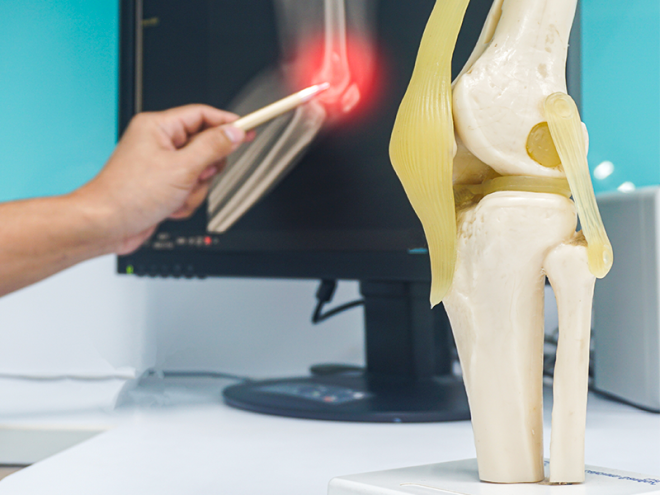Unknown Facts About Axis Spine And Orthopedics
Unknown Facts About Axis Spine And Orthopedics
Blog Article
Facts About Axis Spine And Orthopedics Revealed
Table of Contents10 Simple Techniques For Axis Spine And OrthopedicsNot known Facts About Axis Spine And OrthopedicsHow Axis Spine And Orthopedics can Save You Time, Stress, and Money.The 5-Second Trick For Axis Spine And Orthopedics
An orthopedic cosmetic surgeon is a doctor who specializes in dealing with troubles of the bones, joints, and connective tissues, and ensuring you maintain a healthy musculoskeletal system., we have highly certified orthopedic specialists that are qualified of dealing with clients of all ages. I got involved in study during my initial year of clinical school, and I began making links with orthopedic cosmetic surgeons early on.
Discuss the post-operative care plan with your surgeon. Arrange for transportation to and from the hospital on the day of surgical treatment.
An Unbiased View of Axis Spine And Orthopedics

Your physician will certainly provide plenty of details regarding post-operative care, including just how to remain clean and keep the surgical location clean. Complying with these pointers can prepare you physically and mentally for your orthopedic surgical treatment. Bear in mind to maintain a positive outlook and depend on your clinical group's proficiency, adding to a smoother recuperation process.

Or else, you'll simply get confused. Think of the large photo. Nobody expects you to recognize anything, so do not attempt to remember a lot of random facts. Whether you're pursuing your children, dealing with hiking routes, or displaying your finest dance actions, maintaining your musculoskeletal system in terrific shape is essential. Or else, joint discomfort can actually ruin your life.
The constant ache in your knee or the stiffness in your shoulder can reduce you down and make easy tasks difficult. Typical problems dealt with by orthopedic surgeons are: Fractures and Bone Trauma: Broken bones and various other injuries from accidents or influences. Arthritis: Specifically osteo arthritis, which causes joint discomfort and stiffness. Benign Soft Cells Tumors: Non-cancerous growths in muscles or other soft cells. Bone Cancer: Growths in the bones. Bursitis: Swelling of the little cavities of.
Not known Factual Statements About Axis Spine And Orthopedics
fluid that support the bones, ligaments, and muscles near your joints. Neck and Lower Neck And Back Pain: Problems influencing the back. Orthopedic Injury: Serious injuries impacting bones, joints, or soft cells. Sports Injuries: Problems like ligament tears, tendon injuries, and joint pain from sports tasks.
Sprains and Strains: Injuries to ligaments and muscle mass. Tendinitis: Inflammation of the tendons. Orthopedic specialists do a range of treatments to help individuals with bone and joint concerns. Usual instances are knee and hip substitutes. Joint Restoration: Reconstructing a damaged joint to restore its function. Bone Grafting: Taking bone from one part of the body and transplanting it to another location to fix and restore harmed bones. Reconnecting Nerves: Repairing damaged nerves to restore activity and experience. Back Disk Replacement: Replacing a damaged back disk with a fabricated one to relieve discomfort and recover function. You'll need to take and pass the Medical University Admission Examination( MCAT). This standardized test assesses your knowledge and abilities needed for success in medical school. Clinical institution is an intense

The Ultimate Guide To Axis Spine And Orthopedics
Next off, they complete an orthopedic residency. It's typically 5 years and provides hands-on discovering in a medical setting. Consultations typically consist read of: Discussing your signs, clinical history and way of life.
Therapy suggestions. Some problems need additional imaging, like a CT check or MRI for more comprehensive views of the unpleasant area. Your orthopedist will certainly recommend therapies to lower symptoms up until you obtain a medical diagnosis. Orthopedic specialists specialize in nonsurgical and surgical methods. For sure types of orthopedic trauma or genetic problems, surgery is typically the initial line of therapy. For many other problems, orthopedists attempt nonsurgical treatmentsinitially. It may take greater than one kind of therapy to achieve enduring alleviation. Picking the right is crucial for successful surgical outcomes and enhanced client healing. With a variety of alternatives readily available in the market, it can be overwhelming for both cosmetic surgeons and clients to make a notified decision. The top five elements to take into consideration when selecting an orthopedic implant are surgical compatibility, cost-effectiveness, considerations for revision surgery, patient-specific factors, and the design and innovation of the dental implant. They can be found in numerous forms, sizes, and materials, each offering a details objective based upon the client's needs. Understanding the basics of orthopedic implants is crucial prior to diving right into the decision-making process. One of the leading considerations when selecting an orthopedic dental implant is its compatibility with the surgical treatment. Different implants are designed for various medical strategies and techniques. The orthopedic implant should be especially created to fit the client's anatomy and make certain security during the recovery process. Surgical compatibility involves aspects such as implant dimension, shape, and product. The success of orthopedic treatments relies greatly on the proper option and placement of implants that work with the individual's anatomy and case history. By focusing on client safety and wellness, orthopedic specialists can achieve effective outcomes and supply the finest quality of like their people. Cosmetic surgeons have to thoroughly take into consideration the biomechanical properties of the dental implant and just how it will incorporate with the patient's bone structure. This will certainly contribute to much better medical outcomes, minimized complications, and much shorter recuperation time. When choosing implants for an individual, it is important to think about a selection of patient-specific factors that can influence the success and end result of the treatment. These elements include the person's age, bone quality and quantity, oral wellness status, case history, way of living habits, and aesthetic preferences. For older patients with compromised bone thickness, much shorter implants or implanting procedures may be helpful to give the necessary stability and support. 3. Is the size of the orthopedic implant a critical consideration? How does it impact the surgical procedure and the client's healing? Yes, the dimension of the dental implant is vital as it has to match the person's framework for proper fit and functionality. 4. Can the person's age and lifestyle contribute in choosing the most ideal orthopedic dental implant? Definitely. Exactly how does the expense of an orthopedic implant element into the decision-making process, and exist means to stabilize high quality with cost? The expense of the implant is an essential consideration, but it should not be the single determining variable. Stabilizing high quality with affordability involves considering various implant options 'lasting advantages and prospective problems. Report this page